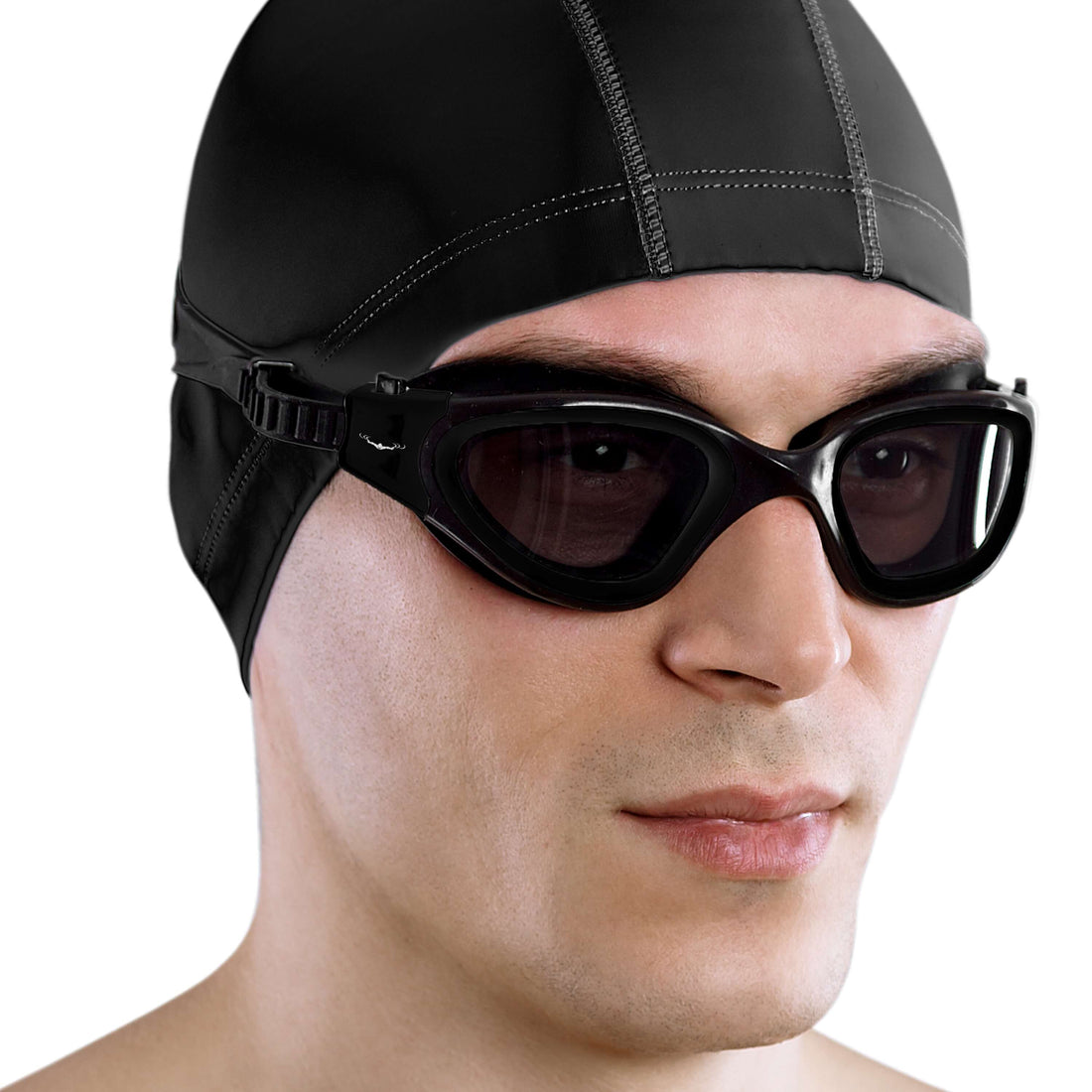Swimming, one of the oldest and most cherished activities of humanity, has transitioned from a necessary survival skill to a celebrated competitive sport. Whether you're a casual swimmer or a dedicated athlete training for championships, understanding the rich history of swimming as a sport enriches your appreciation of the water. In this blog post, we’ll explore the evolution of swimming, major milestones, and how innovations like swim ear plugs and swim ear bands play a vital role in enhancing the experience of swimmers today.
The Origins of Swimming
The origins of swimming can be traced back to prehistoric times. Evidence suggests that humans were swimming as early as 10,000 years ago, with cave paintings found in the Chauvet cave in France depicting figures in various swimming poses. Those images indicate that swimming was not merely a leisure pursuit but also a crucial survival skill in ancient cultures. Different regions of the world engaged in swimming as a practical means for fishing, crossing rivers, and escaping predators.
Ancient Civilizations and Swimming
In ancient civilizations, swimming was an integral part of education and culture. The Egyptians, Greeks, and Romans embraced swimming for fitness and recreation. The Greeks, for instance, valued swimming as part of their gymnastic training, and swimming schools were established to teach the discipline. The famous philosopher Plato highlighted its importance for both physical health and mental clarity.
The Romans made significant strides in developing public swimming places where citizens could enjoy leisurely swims and engage in social activities. Notable examples include the magnificent public baths that served as community hubs throughout the Roman Empire. These public baths became not only places to swim but also venues for relaxation and socializing, indicating that swimming was becoming integrated into daily life.
Swimming in the Middle Ages
With the fall of the Roman Empire, swimming as a sport suffered a decline during the Middle Ages, particularly in Europe. Swimming began to be overshadowed by other activities, and there was growing concern over health and safety in public waters. This resulted in less encouragement for swimming as a recreational or sporting activity during this time.
However, in regions like the Middle East and Asia, swimming maintained its popularity. In Japan, for instance, swimming was included in martial arts training. Meanwhile, the rise of the Renaissance, marked by a renewed interest in the arts and sciences, also reignited interest in physical fitness, including swimming.
Revival: The 19th Century
The 19th century marked a turning point in the history of swimming as a competitive sport. With the establishment of swimming clubs, competitions, and schools, the foundations for modern swimming were laid. The National Swimming Society was founded in London, setting the stage for organized competition. The first recorded swimming race occurred in 1837 in London, leading to an increased focus on swimming as a serious athletic endeavor.
Additionally, many countries began adopting their own styles. In Australia, for example, 'billy swim' became popular, while in the U.S., the racing scene evolved, culminating in the establishment of the Amateur Athletic Union (AAU) in 1888, which governed swimming competitions.
The Birth of Competitive Swimming
Swimming made its official debut as an organized competitive sport in the late 19th century. In 1896, swimming was included in the first modern Olympic Games held in Athens, marking a historic event in the sport's history. The competitive events mainly featured freestyle and breaststroke, showcasing the talents of both men and women athletes. Slowly but surely, swimming began to flourish on the world stage.
Early 20th Century Growth
As the 20th century progressed, competitive swimming continued to grow exponentially. The introduction of new swimming strokes, techniques, and equipment transformed the sport entirely. The 1904 Olympics in St. Louis saw the first women’s swimming events, symbolizing an increasing recognition of female athletes in swimming.
Technological advancements, such as the development of swim ear plugs, swim ear bands, and other swimming gear, began enhancing performance. These innovations allowed athletes to focus on their strokes without the distraction of discomfort, resulting in improved times and a better overall experience in the water.
The Influence of World Wars on Swimming
World Wars I and II brought disruptions to all sports, including swimming. Many athletes enlisted in military service, and competitions were suspended. However, after the wars, swimming experienced a resurgence. The post-war era saw the rise of legendary swimmers like Johnny Weissmuller and Dawn Fraser, who captivated audiences and further popularized the sport.
International Competition and Growth
The establishment of international swimming federations such as FINA (Fédération Internationale de Natation) in 1908 played a critical role in formalizing the rules and regulations of the sport. This paved the way for synchronized events, with swimming now being included in one of the largest sporting events worldwide—the Olympics.
Swimming began to embrace new styles and techniques, with innovations like swim ear plugs and swim ear bands gaining traction. These accessories became essential for many athletes, helping to protect their ears from excess water while enabling them to concentrate on their performance. As swimming evolved, so did these technologies, pushing the limits of competitive swimming.
Modern Swimming: An Era of Professionalism
Entering the late 20th and early 21st centuries, competitive swimming emerged as a professional sport. World Championships, Pan Pacific Championships, and the prestigious Olympics continued to capture the global audience. Athletes like Michael Phelps, Ryan Lochte, and Katie Ledecky became household names, inspiring future generations of swimmers.
Technological Innovations and Training Methods
Today, swimming is at the forefront of sports technology and training methodologies. With advanced techniques in stroke mechanics and rigorous training regimens, athletes are consistently breaking records and achieving remarkable feats. The utilization of swim ear plugs and swim ear bands has also become a norm in modern swimming practice. These accessories not only enhance performance but also contribute to the safety and comfort of athletes.
In addition to traditional training, new performance analysis technologies such as underwater cameras aid coaches and swimmers in refining their technique, leading to improved performance and lower times. The combination of technology, dedicated training, and a supportive swimming community has pushed the boundaries of what’s possible in the pool.
The Role of Swimming in Culture and Society
Swimming transcends beyond competition; it holds significant cultural relevance. In numerous cultures worldwide, swimming is associated with leisure, community, and tradition. Competitions foster camaraderie and sportsmanship, while recreational swimming serves as an outlet for relaxation and physical wellness.
As we continue to witness the flourishing of swimming events globally, it’s clear that swimming not only builds athletic skills but also lifelong friendships and community bonds. Families often gather at local swimming pools and beaches, creating lasting memories and instilling a love for water in future generations.
The Future of Swimming
Looking ahead, the future of swimming appears bright. As interest and participation grow, especially among youth, swimming organizations are focusing on making the sport more inclusive and accessible. Are you new to swimming? Consider investing in swim ear plugs and swim ear bands to enhance your comfort and performance in the water.
Moreover, the incorporation of technology such as apps and online coaching platforms offers unprecedented opportunities for swimmers to enhance their skills and training, irrespective of their location. This continuous evolution speaks volumes about the sport’s adaptability and relevance in today’s fast-paced world.
Final Thoughts: Dive Into the Rich Legacy of Swimming
As we’ve explored the incredible journey of swimming as a sport, it’s evident that swimming isn’t just about the competition—it's about heritage, community, and the joy of movement in water. From its primitive beginnings through its rise in popularity and technological advancements, swimming continues to captivate and inspire individuals across the globe.
The passion for swimming remains alive today, and as new generations take the plunge, they can look back on a rich history that has paved the way for their swimming endeavors. So whether you’re racing for gold or simply enjoying a leisurely swim, you’re part of an extraordinary legacy. Dive deep into the world of swimming, and who knows? You might just create your own remarkable legacy in the water!










